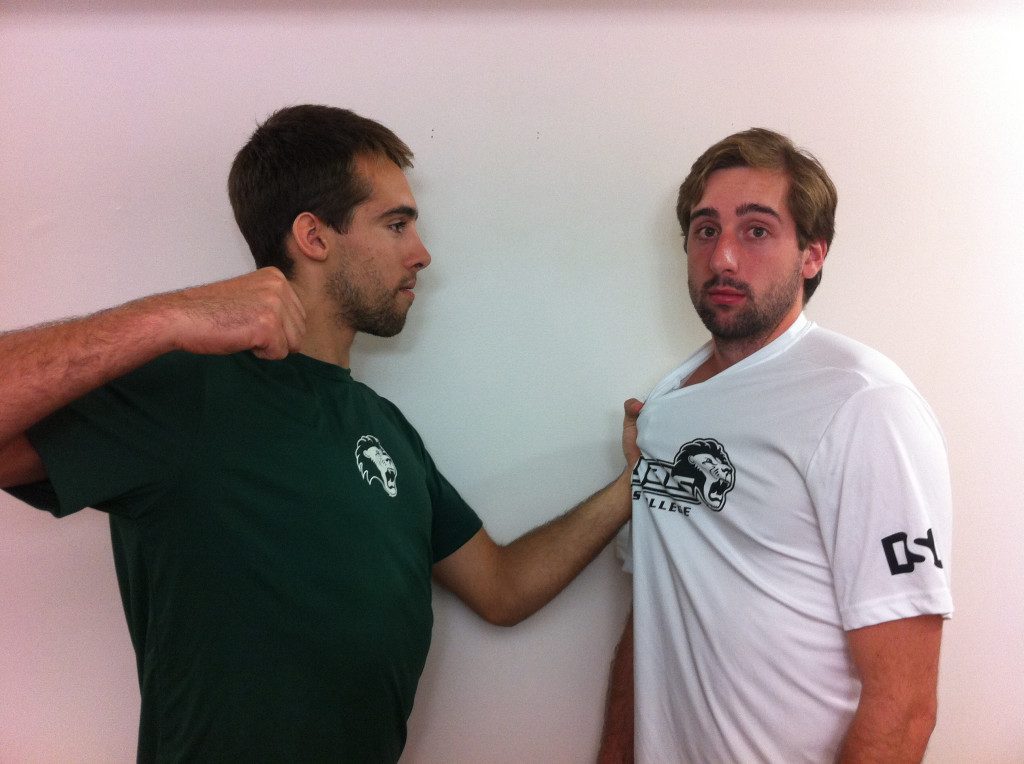It’s all fun and games—until it isn’t
By Katie Czenczek, Staff Writer
At times, when sports team are left to their own devices, horrifying events can take place that would only seem to belong in Lord of the Flies. In 2005 at McGill University, 18-year-old D’Arcy McKeown was sexually assaulted by his fellow teammates with a broomstick, under the guise of hazing. As a result of this very public and extreme version of hazing, many Canadian colleges and universities updated their codes of conduct to ban hazing outright.
Hazing, taken from Douglas College’s Student-Athlete Handbook, “is any action or situation created by a member of the College and/or the Royals Athletics department against another individual(s), for the purpose of affiliation with a group or organization that is negligent or reckless in nature, humiliates or endangers an individual, or unreasonably interferes with scholastic or employment activities.” It is worth noting that it does not matter if the victim who was hazed gave consent or not, under Douglas’ policy. Which brings us to the next question: Why do teammates haze their fellow teammates, and, in particular, rookies on the team?
Often, when hazing occurs, it tends to be considered a ‘rite of passage’ taken by all novice players to truly belong to a team. At least, that’s what my senior soccer team in high school called it when they woke up all of the new players and sprayed us with silly string on a trip to Osoyoos. Hazing can range from more innocent versions like what I had experienced when I was young to what McKeown experienced at McGill University. More often than not, hazing rituals are almost always occurring alongside the presence of alcohol.
Interestingly enough, hazing actually does more harm to team cohesiveness than good, as found in a study conducted by Van Raalte, Cornelius, Linder, and Britton in 2007. The study revealed how negative team bonding situations led new players to feel less comfortable with their teammates and to be less interested in being a part of the team. Therefore, making the claim that hazing actually strengthens a team is false. That is why it is overall just better to avoid hazing your teammates if you want your team to succeed during the season.
Douglas College’s policy on hazing is similar to McGill University’s: They both ban hazing and have clear guidelines for how to report hazing and the measures that will take place. However, the problem is that many student athletes tend to not feel comfortable saying what happened to them. It is difficult to report what happens to victims of hazing because of the humiliating situations these people are put into. “I don’t want that on my conscience because I didn’t have the courage to speak up,” said a student who came out ten years after the 2005 McGill incident to report a similar hazing experience, in a statement to the Globe and Mail.
This indicates that the policy McGill amended may have failed to stop hazing from occurring, as many students before McKeown were likely to not report their experiences with hazing. Although he was not the only one who experienced hazing in 2015, he was the only student to come forward.
Overall, hazing is an archaic and outdated way to initiate new teammates. It does nothing to help team bonding and creates a toxic environment for everyone involved.



